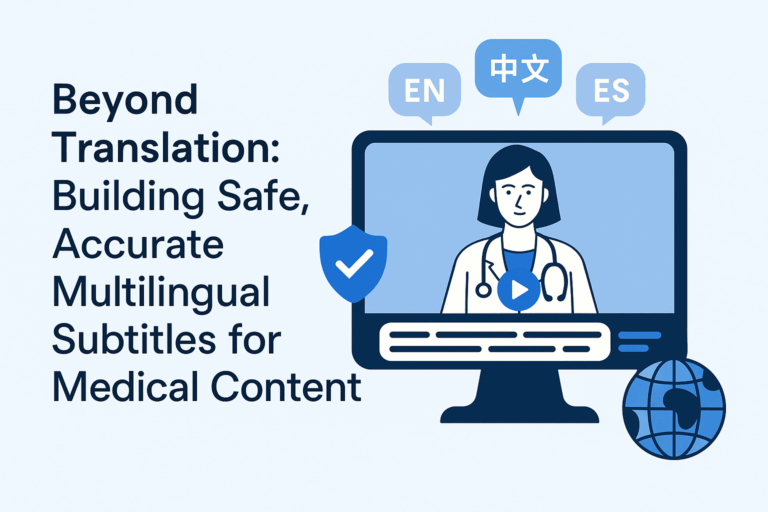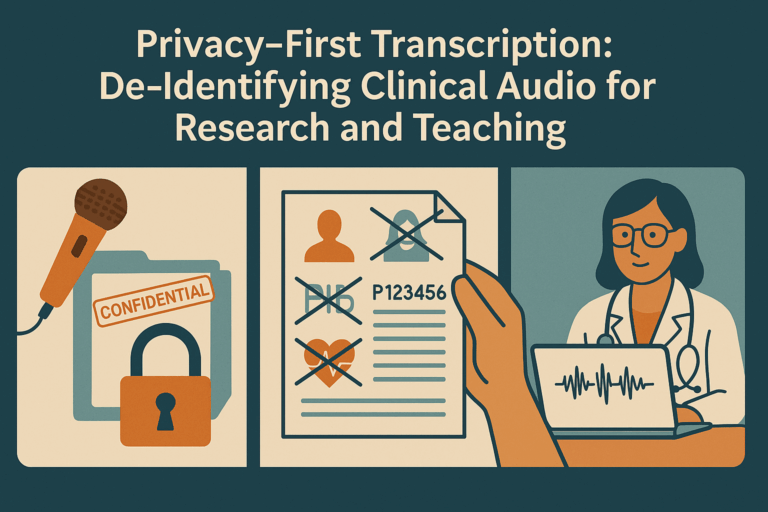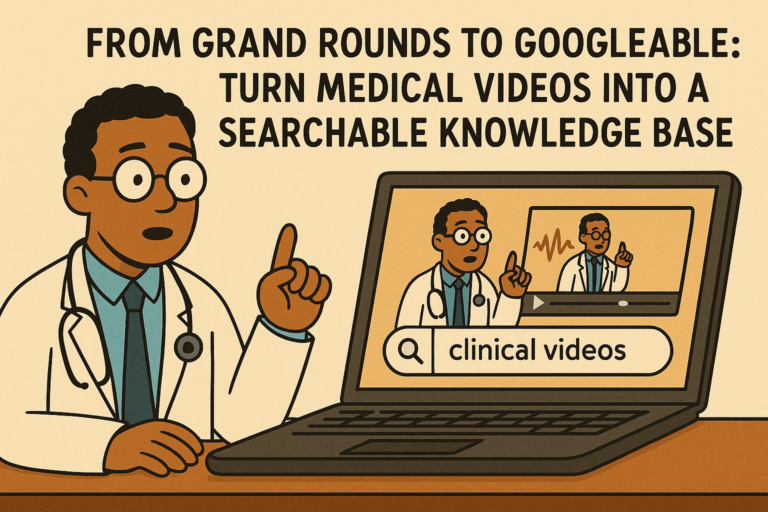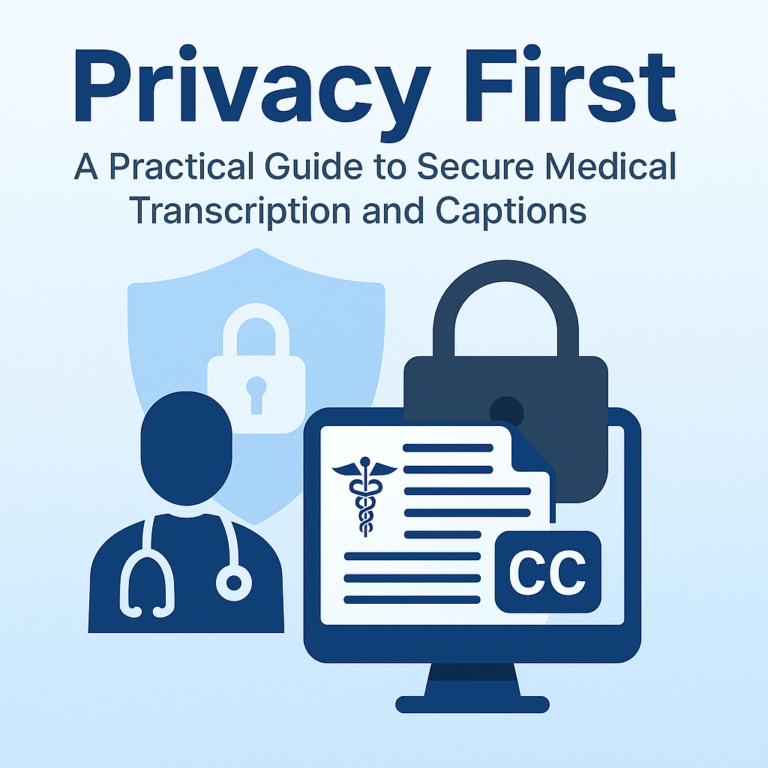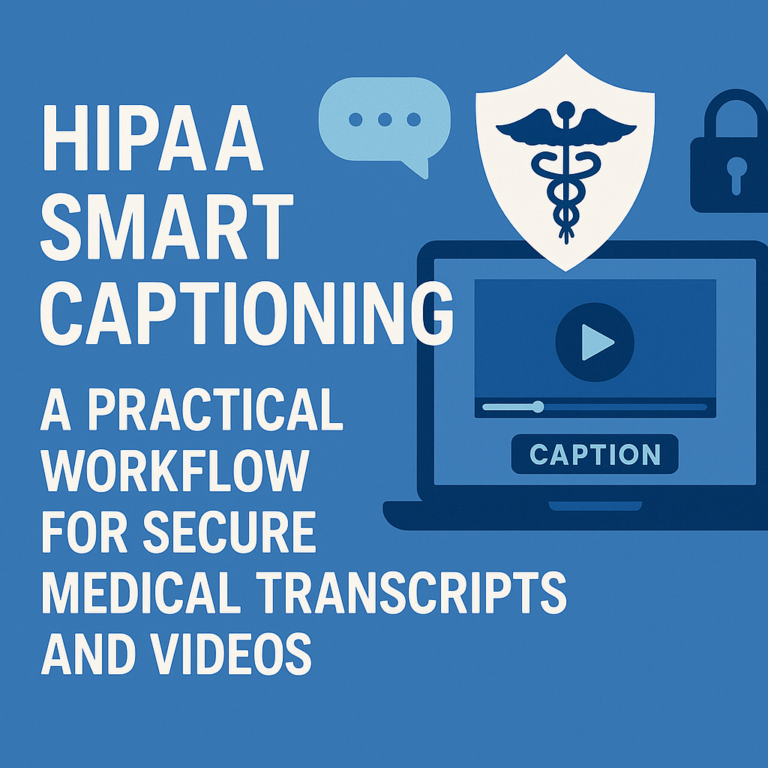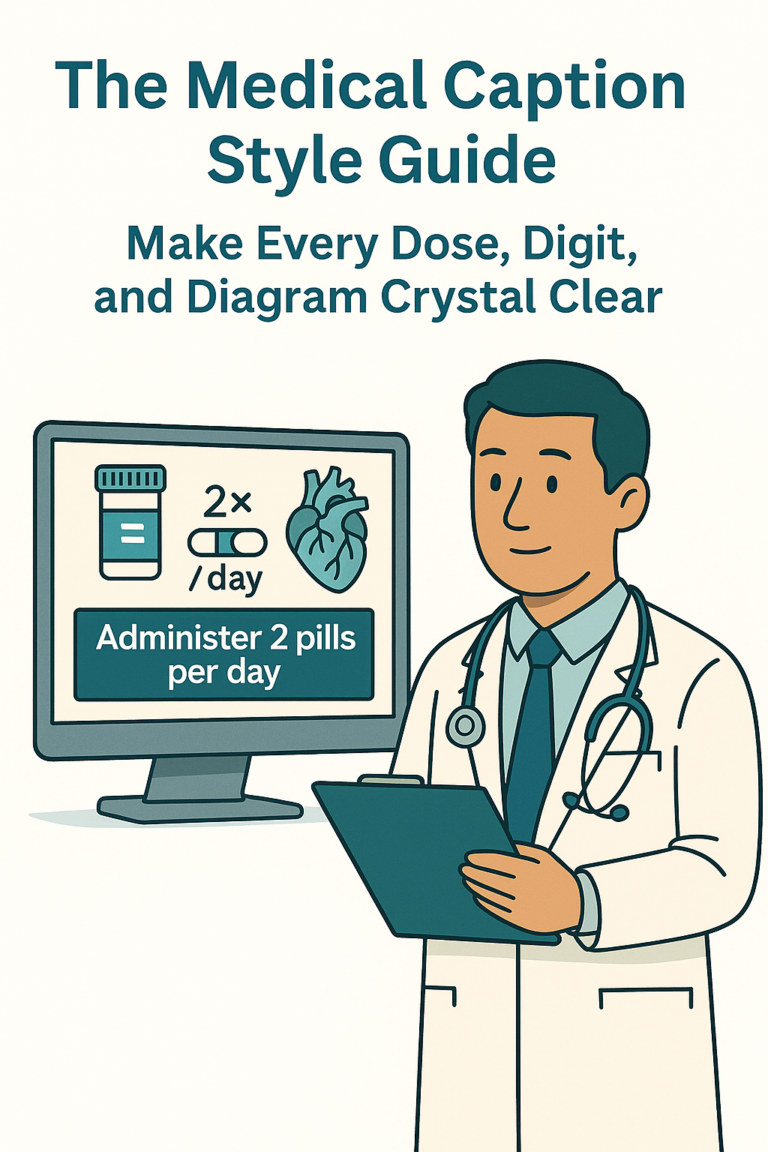A cardiology fellow records grand rounds to share with interns. A resident with hearing loss asks for captions. Compliance wonders whether the slides show admission dates or MRNs. Suddenly, a helpful idea becomes a risk assessment. Sound familiar?
You can have both clarity and compliance—if you approach transcription and captioning the HIPAA-smart way.
This playbook outlines how healthcare teams can deliver accurate transcripts and closed captions without compromising privacy, whether you’re producing patient education videos, telehealth recaps, or teaching conferences.
What “Protected” Really Means in Transcripts and Captions
In healthcare, audio and video almost always contain Protected Health Information (PHI). Even if a patient’s face isn’t visible, transcripts or captions can include names, dates, locations, or device IDs. Assume PHI is present unless content is intentionally de-identified.
Common ways PHI slips in:
Grand rounds or M&M conferences with dates or rare diagnoses
Telehealth recordings with patient identifiers
Procedure videos showing monitor overlays or timestamps
Research interviews mentioning participant context
Accessibility and privacy aren’t opposites. Captions support clinicians and students who are Deaf or hard of hearing, non-native speakers, and anyone learning complex material. The goal is to retain clinical precision while removing identifiers.
The Vendor Security Checklist
Before uploading a file, confirm your platform meets healthcare’s compliance standards.
Security must-haves:
Business Associate Agreement (BAA)
Encryption in transit (TLS 1.2+) and at rest (AES-256)
Role-based access and least-privilege permissions
Single sign-on (SSO/SAML) and MFA support
Audit logs with exportable activity trails
Data retention controls and secure deletion
Data residency options
No model training on your data without explicit consent
Breach response and notification protocols
Quality and workflow essentials:
Medical-grade transcription accuracy
Custom vocabulary (drugs, devices, genes, acronyms)
Speaker labels and timestamps
Sidecar caption exports (SRT/VTT)
Redaction or de-identification options
MedXcribe was built specifically for medical content. Fine-tuned on clinical language, it recognizes complex terms like dapagliflozin, Watchman, and hemoglobin electrophoresis without confusion—cutting correction time dramatically.
A 7-Step HIPAA-Smart Workflow
1. Map the use case
Identify your audience, deliverables, and whether PHI is necessary.
2. Minimize PHI upfront
Scrub slides, blur patient images, and coach presenters to avoid identifiers.
3. Capture clean, compliant audio
Use quality mics, neutral file names, and visible consent notices.
4. Secure upload and permissions
Store in private workspaces, use role-based access, and apply SSO or expiring links.
5. Tune for medical accuracy
Add specialty terms and have a clinician or transcriptionist do a quick QA pass.
6. Make captions readable and compliant
Keep 1–2 lines per screen, sync closely, use plain punctuation, and redact identifiers in public versions.
7. Publish, archive, and dispose responsibly
Host securely, apply retention schedules, and log all access or deletions.
A Real-World Example
A teaching hospital used this approach to caption morning reports. After de-identifying slides and using a medical-tuned transcription engine, reviewers spent just 15 minutes per hour of audio on final checks—fast enough for same-day release. Residents reported better recall and understanding when captions were on.
Key Takeaways
Accuracy, accessibility, and privacy can coexist.
Treat all recordings as PHI unless intentionally de-identified.
Use platforms that meet healthcare’s security bar.
Build a repeatable process: minimize PHI → capture clean audio → review fast → publish safely.
If you’re ready to scale secure, accurate medical transcription and captions, start small—a couple of sessions, one teaching video. Measure review time, satisfaction, and accessibility impact.
MedXcribe helps you get there: fine-tuned for medical language, designed for teams that can’t compromise on accuracy or compliance.
Note: This article is for informational purposes only and does not constitute legal advice. Always consult your compliance team for specific guidance.

